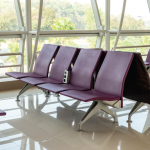 Non-surgical specialties, including rheumatology, are more profitable when they use a non-physician provider (NPP) and other support personnel, according to new data from the Medical Group Management Association (MGMA).
Non-surgical specialties, including rheumatology, are more profitable when they use a non-physician provider (NPP) and other support personnel, according to new data from the Medical Group Management Association (MGMA).
The finding isn’t necessarily new, because past reviews have reported that the use of NPPs can demonstrably improve a practice’s financial bottom line.1 But the latest data are a reminder for rheumatologists of the day-to-day value they can reap by bringing on key support staff, says MGMA Senior Fellow of Industry Affairs David Gans.
“You can invest in technology, you can invest in physical capital, and you can invest in human capital,” Mr. Gans says. “NPPs are a human capital investment [who] … [can] address a substantial amount of the care responsibilities for a [patient]. And they have much lower compensation levels [than physicians do].”
The data from the 2017 MGMA DataDive Cost and Revenue Survey, which compares ratios of NPPs with full-time equivalent (FTE) physicians, are undeniable.2 For physician-owned practices with a ratio of 0.21–0.40 NPPs to one FTE physician, total medical revenue after operating costs was $548,688. For practices with 0.41 or more NPPs to one FTE physician, total revenue was $751,133. In hospital-owned practices, the trend was similar. For practices with 0.20 or fewer NPPs per physician, total medical revenue after operating costs was $220,147. For hospital-owned groups with 0.21–0.40 NPPs per FTE physician, revenue jumped to $234,444; and for groups with 0.41 or more NPPs per FTE physician, revenue climbed to $338,790.
Beneath the numbers, the basic return on investment is that the more work an NPP can handle for a rheumatologist, the more new patients the rheumatologist can see. More patients, of course, means more revenue.
“This [increase] is true whether you’re a physician-owned practice or part of a hospital system,” Mr. Gans says.
If the trend is economically obvious, why aren’t more groups using NPPs? Or more NPPs?
Practice Limitations
One constraint for practices is physical space. A solo practitioner doesn’t add a provider so that the two of them can split one exam room. Bringing on more staff means adding space, and more space means greater expense for the practice.
Often, “private-practice doctors are so concerned about practice overhead they constrain the physical facility,” Mr. Gans says. “In private practice, the doors are thinner, the rugs are thinner, and the exam rooms are smaller. I’ve had excellent care in both [private and public] facilities because of the quality of providers, but you can see the difference in facilities.”


